- The paper introduces novel computable bounds, K3 and K4, that significantly tighten Lipschitz constant estimates for deep neural networks.
- It demonstrates the effectiveness of l1 and l∞ norms and extends these bounds to CNNs using both explicit and implicit max-pooling decompositions.
- Empirical results on random networks, function approximations, and MNIST CNNs confirm the benefits of the proposed bounds, especially the sharpness and reduced variance of K4.
Computable Lipschitz Bounds for Deep Neural Networks
Motivation and Problem Statement
The stability of deep neural networks (DNNs) under small input perturbations is a critical property, especially in adversarial and safety-critical contexts. The Lipschitz constant of a neural network provides a formal measure of this stability, bounding the network's sensitivity to input changes. However, existing upper bounds for the Lipschitz constant are often either loose or computationally intractable for deep architectures, particularly in the l2 norm. This work systematically analyzes existing bounds, highlights the importance of l1 and l∞ norms, and introduces two novel, sharper, and efficiently computable bounds for both fully-connected and convolutional neural networks (CNNs). Theoretical results are substantiated with comprehensive numerical experiments, including cases where the exact Lipschitz constant is known.
Review of Existing Lipschitz Bounds
The classical approach to bounding the Lipschitz constant of a DNN is to multiply the operator norms of the weight matrices across layers, yielding the so-called "worst-case" bound K∗. While this is straightforward, it is highly pessimistic and grows exponentially with network depth, rendering it ineffective for deep models. More refined bounds, such as the Combettes-Pesquet bound (K1) and the Virmaux-Scaman bound (K2), exploit the structure of activation functions and matrix products to provide tighter estimates. However, these bounds either remain loose in practice or are computationally expensive due to the combinatorial explosion in the number of terms.
Novel Bounds: K3 and K4
The paper introduces two new bounds, K3 and K4, specifically tailored for l1 and l∞ norms. The K3 bound leverages the element-wise absolute value of weight matrices, exploiting the fact that for these norms, the induced matrix norm of a product is bounded by the product of the absolute value matrices. The K4 bound further refines this by combining the Combettes-Pesquet decomposition with the absolute value trick, yielding a bound that is provably sharper than both K1 and K3.
Theoretical analysis establishes the following hierarchy:
L≤K≤K4≤min(K1,K3)≤K∗,
where L is the true Lipschitz constant and K is the ideal (but generally intractable) bound.
Extension to Convolutional Neural Networks
The extension of these bounds to CNNs is nontrivial due to the presence of convolutional, pooling, and activation layers. The paper develops two approaches:
- Explicit Approach: Decomposes max-pooling operations into compositions of simpler row-wise and column-wise pooling, allowing the application of the same bounding techniques as for fully-connected layers. This approach is exact but can be computationally intensive for large kernels.
- Implicit Approach: Represents max-pooling as a single linear operation with a data-dependent selection matrix, significantly reducing computational complexity at the cost of some looseness in the bound.
Both approaches yield computable analogues of K1, K3, and K4 for CNNs, and the theoretical ordering of bounds is preserved.
Numerical Experiments
Random Networks
Empirical evaluation on randomly initialized fully-connected networks confirms the theoretical ordering of bounds. The K4 bound consistently provides the tightest computable upper bound, with significantly reduced variance compared to K1 and K3.
Polynomial Function Approximation
The paper constructs deep ReLU networks that exactly or efficiently approximate x2 and xy using explicit series representations. For the x2 network, the K4 bound is exact for certain architectures, while K∗, K1, and K2 grow exponentially with depth. This is illustrated in the following figure:
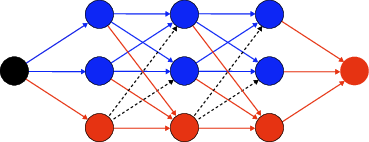

Figure 1: Graphical representation of the network representing the function x−∑r=034rgr(x).
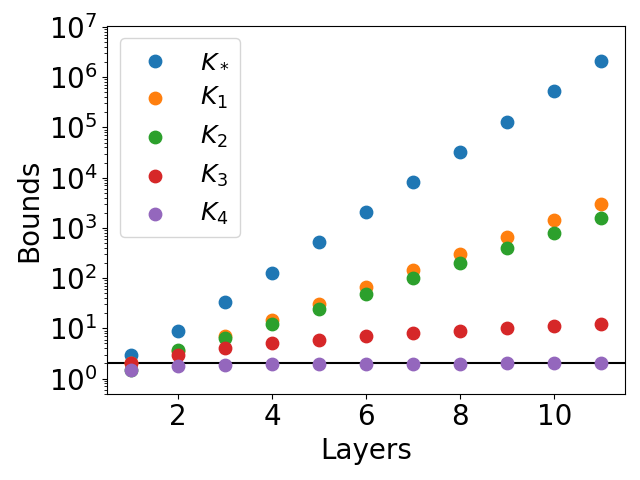
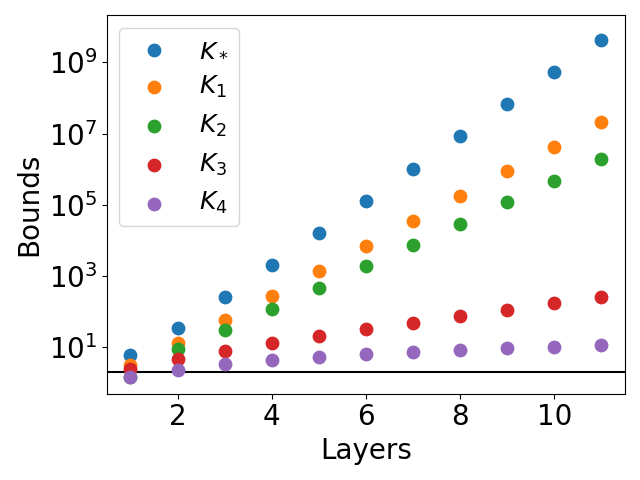


Figure 2: Lipschitz bounds for networks approximating the function x2. The function g is represented as in equation (6).
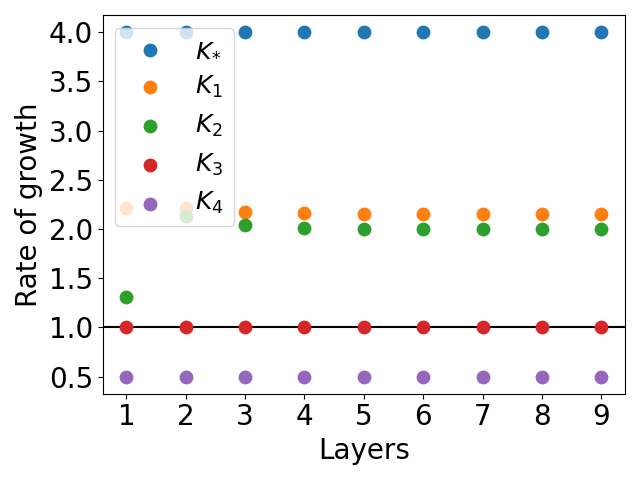

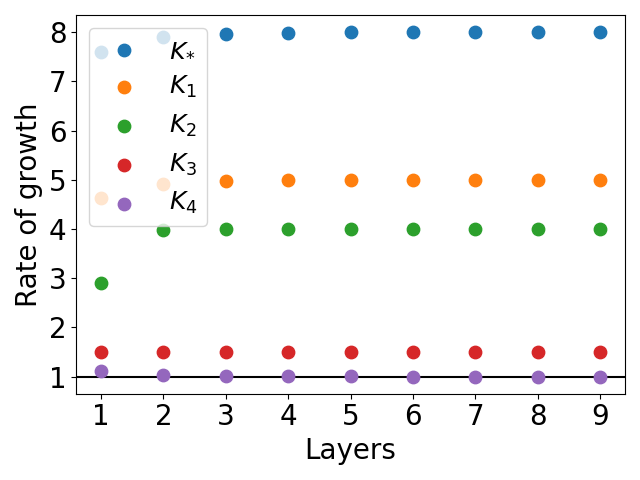

Figure 3: Rates of growth for networks approximating the function x2. The function g is represented as in equation (6).
For the xy function, a novel mesh-based construction is proposed, and the bounds are evaluated for networks of increasing depth. All bounds except K4 exhibit exponential growth, while K4 remains much tighter.
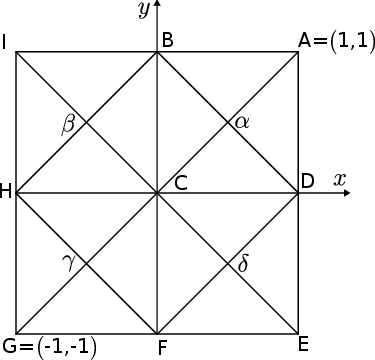

Figure 4: Mesh used to construct the neural network approximating the function xy on [−1,1]2.
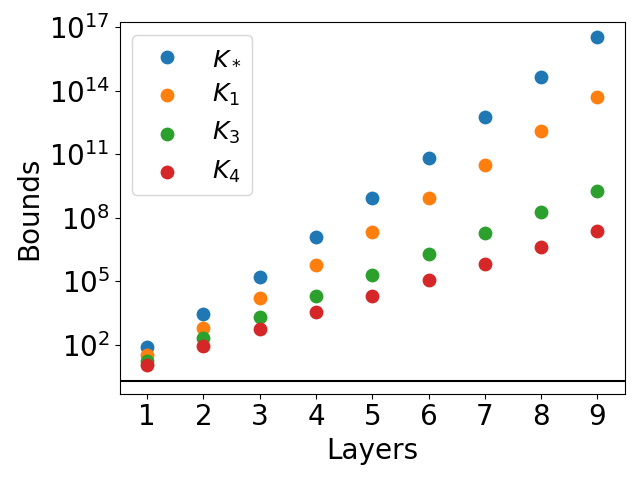
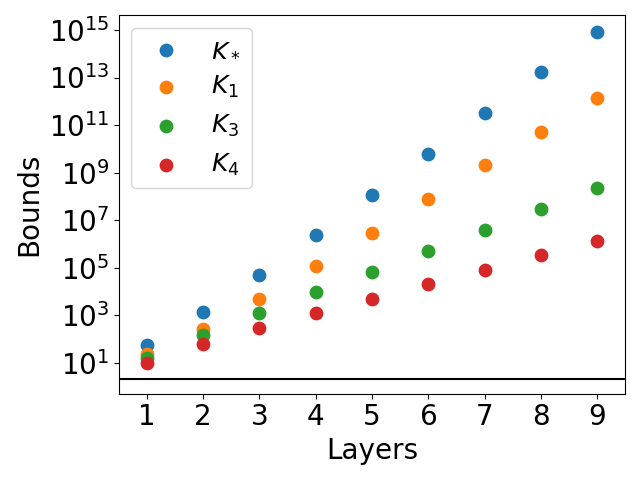


Figure 5: Lipschitz bounds for networks approximating the function xy. The function φ^ is represented as in equation (19).
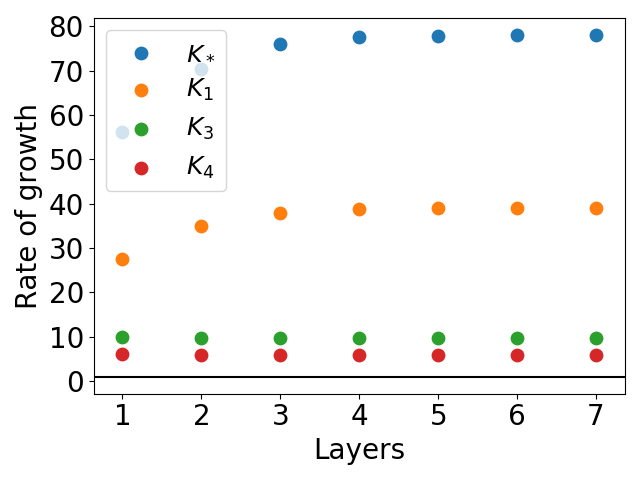
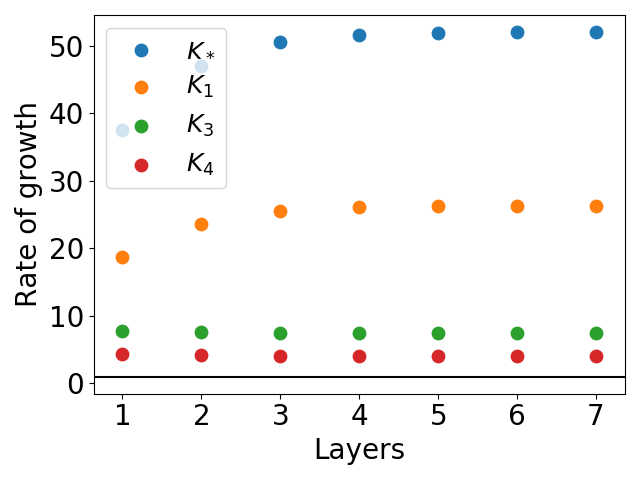


Figure 6: Rates of growth for networks approximating the function xy. The function φ^ is represented as in equation (19).
Convolutional Neural Networks on MNIST
The bounds are further tested on CNNs trained on MNIST with various architectures and regularization strengths. The K4 bound, both in explicit and implicit forms, consistently outperforms other computable bounds. The implicit approach yields tighter bounds than the explicit approach, especially for large networks with multiple max-pooling layers. Increasing l2 regularization during training leads to lower Lipschitz bounds, confirming the practical utility of these estimates for controlling network robustness.
Theoretical and Practical Implications
The results demonstrate that the l1 and l∞ norms are preferable for certifying Lipschitz bounds in many practical scenarios, particularly for networks with ReLU or similar activations. The K4 bound provides a practical tool for certifying robustness, with computational complexity comparable to existing methods but with significantly improved tightness. The explicit construction of networks approximating x2 and xy with known Lipschitz constants provides valuable benchmarks for future theoretical analysis.
The extension to CNNs, including both explicit and implicit approaches for max-pooling, enables the application of these bounds to state-of-the-art architectures in computer vision and scientific computing. The empirical results suggest that these bounds can be integrated into training pipelines for regularization or certification purposes.
Future Directions
Potential avenues for further research include:
- Extending the analysis to other norms and activation functions.
- Developing efficient algorithms for computing or approximating K4 in very large-scale networks.
- Integrating these bounds into training objectives to directly optimize for robustness.
- Generalizing the explicit network constructions to broader classes of functions and higher dimensions.
Conclusion
This work provides a comprehensive theoretical and empirical analysis of computable Lipschitz bounds for deep neural networks, introducing two new bounds that are provably sharper than existing alternatives in l1 and l∞ norms. The K4 bound, in particular, is shown to be optimal in certain cases and consistently outperforms prior bounds in practical settings. The extension to CNNs and the demonstration on both synthetic and real-world tasks underscore the practical relevance of these results for robust deep learning.









